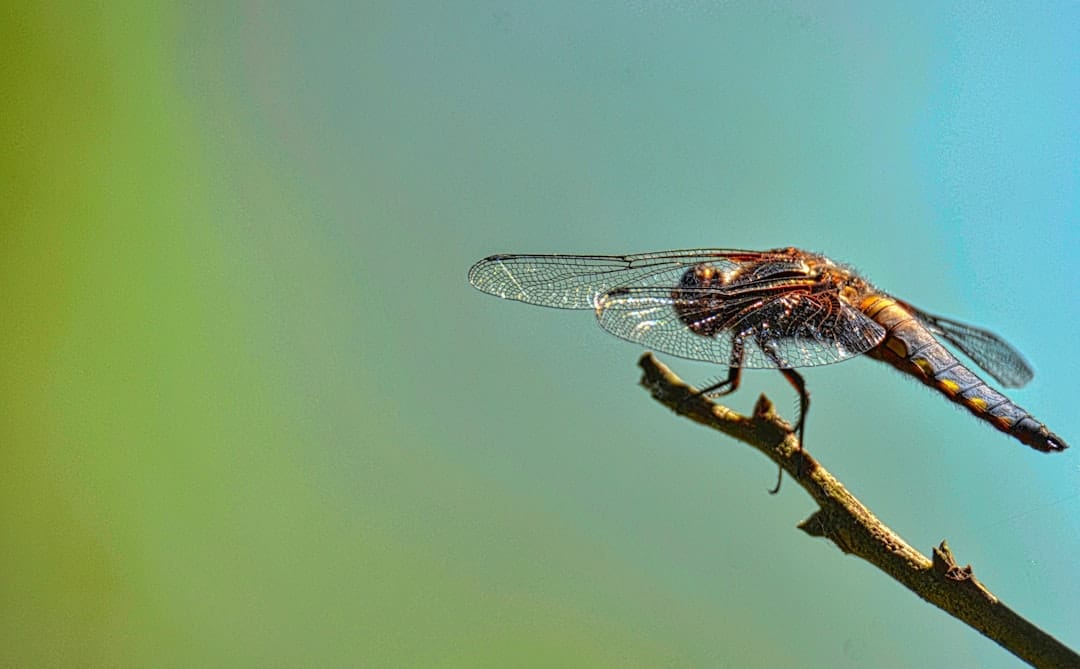Termites are one of the most destructive pests that can invade your home. They can cause significant damage to the structure of your house, leading to costly repairs and potential safety hazards. Understanding and preventing termite infestations is crucial for homeowners to protect their investment and ensure the longevity of their property. In this article, we will explore the anatomy and behavior of termites, signs of infestation, prevention strategies, natural vs chemical solutions, DIY termite control methods, when to call for professional help, termite-proofing your home, ongoing maintenance and inspection, dealing with termite damage, long-term prevention practices, and conclude with a call to action for readers to take steps to prevent termite infestations in their homes.
Contents
- 1 Understanding Termite Colonies: Anatomy and Behavior
- 2 Signs of Termite Infestation: How to Detect Them Early
- 3 Prevention is Key: How to Keep Termites Away from Your Home
- 4 Natural vs Chemical Solutions: Pros and Cons of Each Method
- 5 DIY Termite Control: Effective Home Remedies to Try
- 6 Professional Termite Treatment: When to Call for Help
- 7 Termite-Proofing Your Home: Building and Renovation Tips
- 8 Maintenance and Inspection: How to Keep Your Home Termite-Free
- 9 Dealing with Termite Damage: Restoration and Repair Options
- 10 Long-Term Prevention: Sustainable Practices to Keep Termites at Bay
Key Takeaways
- Termite colonies have a complex social structure and behavior, with different castes and roles.
- Signs of termite infestation include mud tubes, discarded wings, and hollow-sounding wood.
- Prevention measures include reducing moisture, removing wood debris, and sealing cracks and gaps.
- Natural solutions like nematodes and orange oil can be effective but may require more frequent applications.
- Professional treatment may be necessary for severe infestations or hard-to-reach areas.
Understanding Termite Colonies: Anatomy and Behavior
Termites are social insects that live in colonies. They are often mistaken for ants due to their similar size and behavior. However, termites have distinct characteristics that set them apart. Termites have soft bodies and straight antennae, while ants have hard bodies and elbowed antennae. They also have different roles within their colonies.
A termite colony consists of three main castes: workers, soldiers, and reproductives. Workers are the most numerous members of the colony and are responsible for building and maintaining the nest, foraging for food, and feeding other members of the colony. Soldiers have larger heads and powerful jaws that they use to defend the colony against predators. Reproductives are responsible for reproducing and establishing new colonies.
Termites feed on cellulose-based materials such as wood, paper, and cardboard. They have specialized bacteria in their digestive systems that allow them to break down cellulose into usable nutrients. This ability makes them highly efficient at consuming wood and causing damage to structures.
Signs of Termite Infestation: How to Detect Them Early
Detecting a termite infestation early is crucial for minimizing damage and preventing further spread. There are several signs that can indicate a termite infestation in your home. These include:
1. Mud tubes: Termites build mud tubes to protect themselves from predators and maintain a moist environment. These tubes are typically found along the foundation of your home or on walls.
2. Wood damage: Termites hollow out wood from the inside, leaving behind a thin layer of paint or veneer. If you tap on the wood and it sounds hollow, it may be a sign of termite damage.
3. Discarded wings: When termites swarm to establish new colonies, they shed their wings. Finding discarded wings near windowsills or light fixtures can indicate an active termite infestation.
4. Frass: Termite droppings, also known as frass, resemble small pellets or sawdust. Finding frass near wooden structures or in piles can be a sign of termite activity.
To conduct a thorough inspection of your home for termites, start by checking the exterior for mud tubes, wood damage, and discarded wings. Pay close attention to areas where wood comes into contact with the ground, such as foundation walls and wooden decks. Inside your home, inspect basements, crawl spaces, and attics for signs of termites. If you suspect an infestation, it is recommended to contact a professional termite exterminator for further inspection and treatment.
Prevention is Key: How to Keep Termites Away from Your Home
| Prevention Method | Description |
|---|---|
| Remove Wood Debris | Termites are attracted to wood debris, so removing it from around your home can help prevent infestations. |
| Keep Soil Moisture Levels Low | Termites thrive in moist environments, so keeping soil moisture levels low around your home can help deter them. |
| Seal Cracks and Crevices | Termites can enter your home through small cracks and crevices, so sealing them can help prevent infestations. |
| Use Treated Wood | Treated wood is less attractive to termites, so using it for construction projects around your home can help prevent infestations. |
| Regular Inspections | Regular inspections by a pest control professional can help detect and prevent termite infestations before they become severe. |
Preventing termite infestations is essential for protecting your home from damage. There are several strategies you can implement to keep termites away:
1. Remove wood-to-soil contact: Termites need soil to survive and thrive. By eliminating direct contact between wood and soil, you can reduce the risk of termite infestations. Ensure that wooden structures such as decks and fences are built on concrete or metal supports, and keep firewood and other wooden materials elevated off the ground.
2. Reduce moisture: Termites are attracted to moist environments. Fix any leaks in your home’s plumbing, ensure proper drainage around your property, and use dehumidifiers in damp areas such as basements and crawl spaces. Regularly inspect and maintain gutters and downspouts to prevent water from pooling near your home’s foundation.
3. Seal cracks and openings: Termites can enter your home through small cracks and openings. Inspect your home for any gaps around windows, doors, and utility lines, and seal them with caulk or weatherstripping. Repair any damaged or rotting wood promptly to prevent termites from gaining access.
4. Use termite-resistant materials: When building or renovating your home, consider using termite-resistant materials such as concrete, steel, or pressure-treated wood. These materials are less susceptible to termite damage and can help deter infestations.
Regularly inspecting your home for signs of termites and implementing these prevention strategies can significantly reduce the risk of infestation.
Natural vs Chemical Solutions: Pros and Cons of Each Method
When it comes to termite control, there are two main approaches: natural solutions and chemical treatments. Each method has its pros and cons.
Natural solutions involve using non-toxic substances to repel or kill termites. Some popular natural remedies include orange oil, boric acid, and diatomaceous earth. These substances are generally safe for humans and pets but may require repeated applications for effectiveness. Natural solutions are often preferred by those who prioritize environmental sustainability and want to avoid the use of harsh chemicals.
Chemical treatments involve the use of pesticides specifically designed to kill termites. These treatments can be highly effective in eliminating termite colonies but may require professional application due to their toxicity. Chemical treatments can also pose risks to humans and pets if not used properly. However, they often provide long-lasting protection against termites and may be necessary for severe infestations.
The choice between natural and chemical solutions depends on personal preferences, the severity of the infestation, and the level of environmental impact one is willing to accept. It is important to carefully consider the pros and cons of each method before deciding on a course of action.
DIY Termite Control: Effective Home Remedies to Try
If you prefer a do-it-yourself approach to termite control, there are several effective home remedies you can try. These remedies are often natural and can be used as a first line of defense against termites.
1. Orange oil: Orange oil contains d-limonene, a compound that is toxic to termites. Apply orange oil directly to termite-infested areas or use it as a preventive measure by treating wooden structures regularly.
2. Boric acid: Boric acid is a natural insecticide that can be used to kill termites. Mix boric acid with water to create a paste and apply it to infested areas or use it as a preventive treatment by applying it to wooden structures.
3. Diatomaceous earth: Diatomaceous earth is a fine powder made from fossilized algae. It works by dehydrating termites and other insects. Sprinkle diatomaceous earth around termite-infested areas or use it as a preventive measure by creating a barrier around wooden structures.
4. Nematodes: Nematodes are microscopic worms that feed on termites. They can be purchased in garden centers and applied to termite-infested areas or used preventively by watering them into the soil around your home.
While these DIY remedies can be effective for small-scale termite problems, they may not provide complete eradication for severe infestations. If you have a significant termite problem or are unsure about the extent of the infestation, it is recommended to consult a professional termite exterminator.
Professional Termite Treatment: When to Call for Help
While DIY termite control methods can be effective for small infestations, there are situations where it is best to call a professional termite exterminator. Here are some signs that indicate it is time to seek professional help:
1. Widespread infestation: If you notice signs of termite activity in multiple areas of your home or if the infestation has spread to multiple rooms, it is likely that the problem is beyond the scope of DIY remedies.
2. Structural damage: If you have noticed significant structural damage to your home, such as sagging floors or crumbling walls, it is crucial to seek professional assistance. Structural repairs may be necessary, and a professional can assess the extent of the damage and provide appropriate treatment.
3. Uncertainty about the extent of the infestation: If you are unsure about the severity of the termite infestation or are unable to locate the source of the problem, a professional termite exterminator can conduct a thorough inspection and provide an accurate assessment.
Professional termite treatment options may include liquid termiticides, baiting systems, or fumigation. The specific treatment method will depend on the severity of the infestation and the type of termites present. A professional exterminator will be able to recommend the most appropriate treatment plan for your situation.
Termite-Proofing Your Home: Building and Renovation Tips
If you are building a new home or planning a renovation, there are several steps you can take to make your property less attractive to termites and reduce the risk of infestation:
1. Use termite-resistant materials: When selecting building materials, opt for those that are naturally resistant to termites. Concrete, steel, and pressure-treated wood are all good choices. These materials are less susceptible to termite damage and can help deter infestations.
2. Install physical barriers: Physical barriers such as stainless steel mesh or sand barriers can be installed during construction to prevent termites from entering your home. These barriers create a physical barrier that termites cannot penetrate.
3. Properly treat wood: If you are using wood in your construction or renovation, make sure it is properly treated with termite-resistant chemicals. Pressure-treated wood is a common choice as it has been treated with chemicals that repel termites.
4. Maintain proper ventilation: Proper ventilation is essential for preventing moisture buildup, which can attract termites. Ensure that your home has adequate ventilation in areas such as crawl spaces, attics, and basements.
By incorporating these termite-proofing measures into your building or renovation plans, you can significantly reduce the risk of termite infestations and protect your investment.
Maintenance and Inspection: How to Keep Your Home Termite-Free
Ongoing maintenance and regular inspections are crucial for keeping your home termite-free. Here are some tips to help you maintain a termite-free environment:
1. Conduct regular inspections: Inspect your home for signs of termites at least once a year. Pay close attention to areas where wood comes into contact with the ground, such as foundation walls and wooden decks. Look for mud tubes, wood damage, discarded wings, and frass.
2. Address moisture issues promptly: Termites are attracted to moist environments. If you notice any leaks or excess moisture in your home, address them promptly to prevent termites from being attracted to your property.
3. Remove wood debris: Remove any dead trees, stumps, or wood debris from your property. These materials can attract termites and provide a breeding ground for infestations.
4. Trim vegetation: Trim back any vegetation that is in contact with your home’s exterior walls. Overgrown plants can provide a pathway for termites to enter your home.
5. Maintain gutters and downspouts: Regularly clean and maintain your gutters and downspouts to ensure proper drainage. This will prevent water from pooling near your home’s foundation, which can attract termites.
By implementing these maintenance and inspection practices, you can catch termite infestations early and take appropriate action to prevent further damage.
Dealing with Termite Damage: Restoration and Repair Options
If your home has suffered termite damage, it is important to address the issue promptly to prevent further deterioration. Here are some restoration and repair options for termite-damaged homes:
1. Structural repairs: If termites have caused significant structural damage to your home, it may be necessary to hire a contractor to repair or replace affected areas. This may involve replacing damaged beams, joists, or other structural elements.
2. Wood treatments: If the termite damage is localized and has not compromised the structural integrity of your home, you may be able to treat the affected wood with chemicals or natural remedies to kill any remaining termites and prevent further infestation.
3. Cosmetic repairs: Once the termite infestation has been eradicated and any necessary structural repairs have been made, you can focus on cosmetic repairs. This may include patching holes in walls, replacing damaged flooring, or repainting affected areas.
When dealing with termite damage, it is important to work with reputable contractors who have experience in termite restoration. They will be able to assess the extent of the damage and provide appropriate repair options.
Long-Term Prevention: Sustainable Practices to Keep Termites at Bay
In addition to preventing termite infestations, it is important to consider sustainable practices that minimize environmental impact. Here are some sustainable practices for long-term termite prevention:
1. Use reclaimed or recycled materials: When building or renovating your home, consider using reclaimed or recycled materials. This reduces the demand for new materials and helps minimize environmental impact.
2. Opt for non-toxic treatments: If you choose to use chemical treatments for termite control, opt for products that are low in toxicity and have minimal impact on the environment. Look for treatments that are labeled as environmentally friendly or safe for use around humans and pets.
3. Implement water-saving measures: Conserving water not only helps the environment but also reduces moisture levels around your home, making it less attractive to termites. Install low-flow fixtures, fix any leaks promptly, and consider implementing rainwater harvesting systems.
4. Plant termite-resistant vegetation: Some plants are naturally resistant to termites and can help deter infestations. Research termite-resistant plants native to your region and incorporate them into your landscaping.
By adopting these sustainable practices, you can protect your home from termite infestations while minimizing your environmental impact.
Understanding and preventing termite infestations is crucial for homeowners to protect their investment and ensure the longevity of their property. By understanding termite anatomy and behavior, recognizing signs of infestation, implementing prevention strategies, considering natural vs chemical solutions, utilizing DIY remedies, knowing when to call for professional help, termite-proofing your home, conducting ongoing maintenance and inspections, addressing termite damage, and adopting sustainable practices, you can keep termites at bay and maintain a termite-free home. Take action today to protect your home from these destructive pests.
If you’re interested in learning more about termite colony elimination, you may also want to check out this informative article on “The Hidden Threat: Exploring the Different Types of Termites.” This article delves into the various species of termites that can infest your home and cause significant damage. Understanding the different types of termites is crucial in implementing effective pest control measures. To read more about it, click here.




